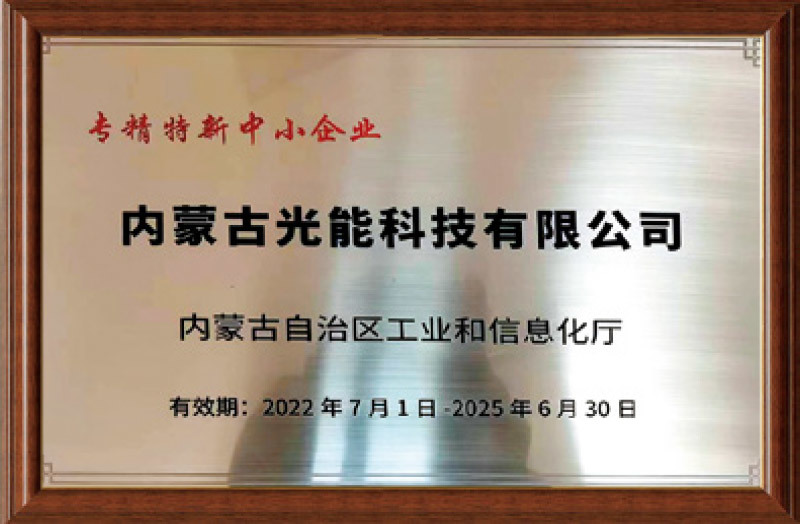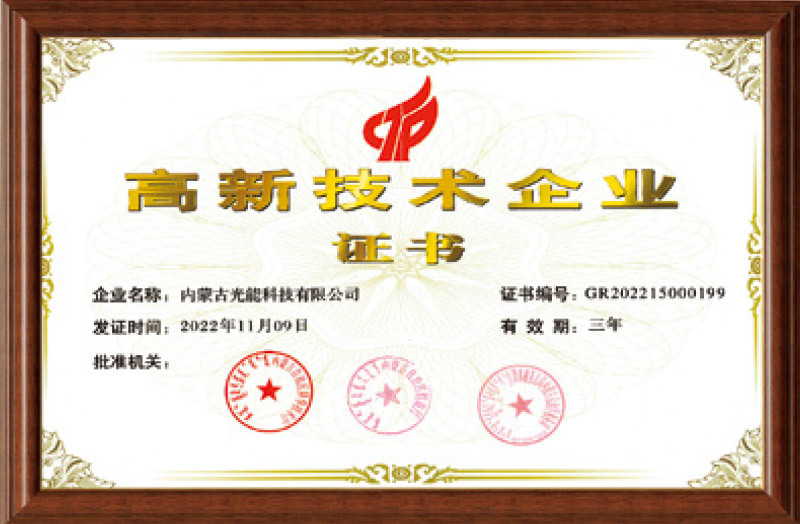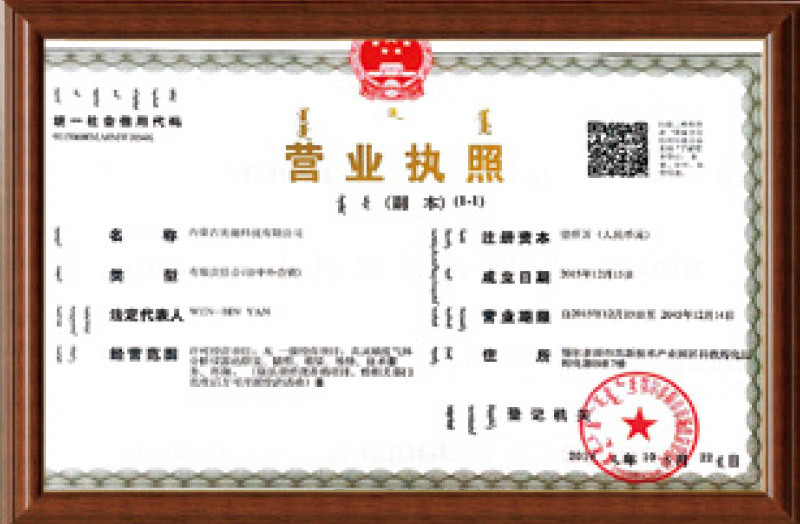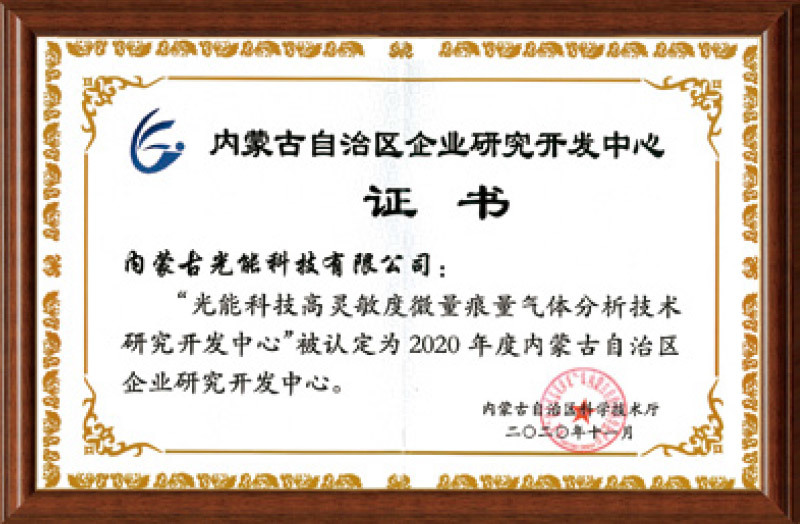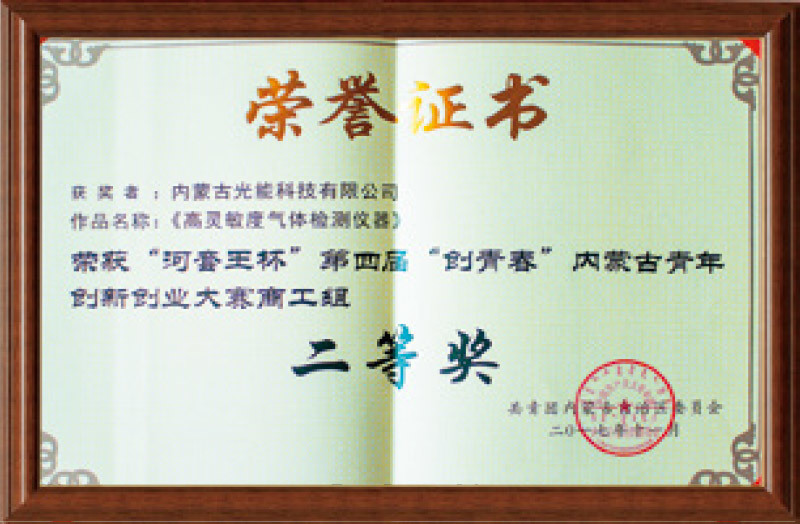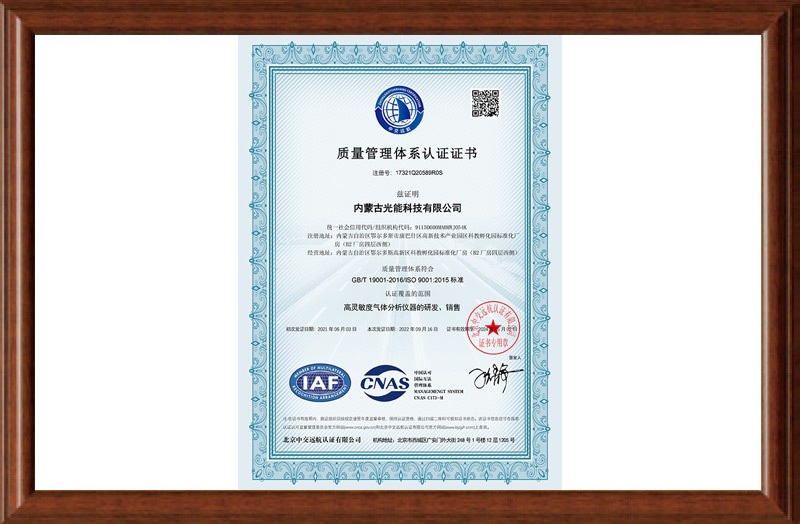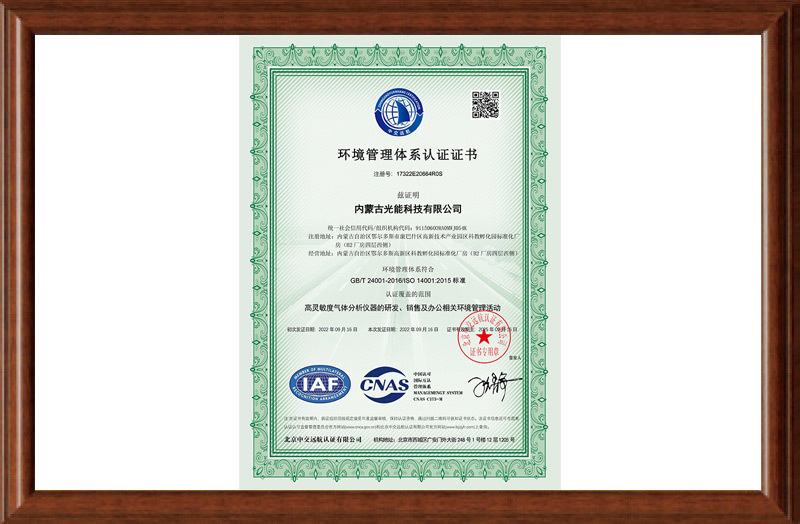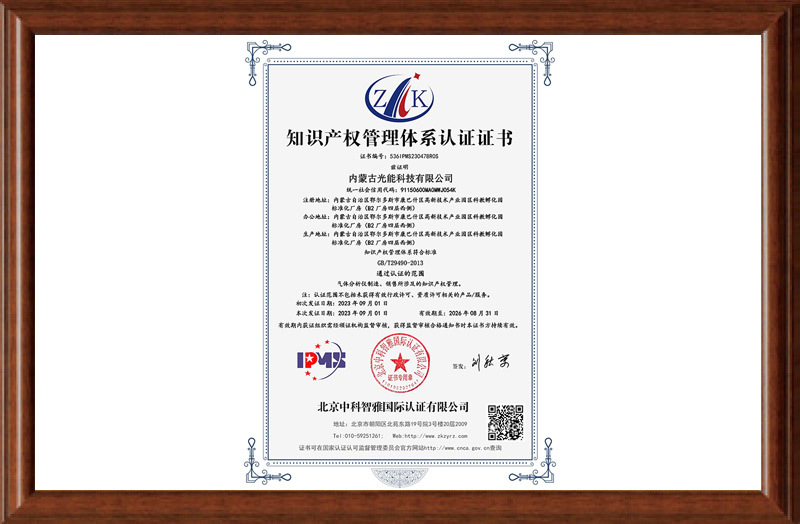Company Profile
Inner Mongolia Photonics Technologies Co., Ltd
Inner Mongolia Photonics Technologies Co., Ltd. was established in December 2015. It is a high-tech enterprise that focuses on the research and development, assembly, and sales of highly sensitive trace gas analysis instruments. The company is located in the Ordos High tech Industrial Development Zone, with Dr. Yan Wenbin, who has won multiple honorary titles such as the "Chinese Government Friendship Award", "National Special Expert", and "Grassland Talent" in Inner Mongolia Autonomous Region, serving as the legal representative and general manager.
The company has strong technological and R&D capabilities. In 2019, the company was recognized as a "high-tech enterprise", in 2020 it was awarded the "Autonomous Region Enterprise Research and Development Center", and in 2022 it was recognized as a "specialized, refined, unique, and new" small and medium-sized enterprise in the autonomous region. On the basis of fully mastering the leading CRDS technology, the company has independently developed various trace gas analyzers through continuous research and innovation, combined with high-quality raw materials, with a monitoring accuracy of up to 10% × 10-9 or above.
The instrument is mainly used in the fields of semiconductors, hydrogen energy, environmental protection, meteorological monitoring, etc.

Company establishment

Partners

Application areas

Intellectual Property
Culture
Enterprise culture

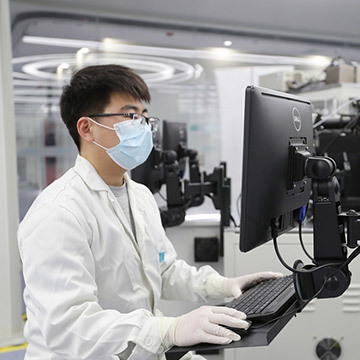
ENTERPRISE SPIRIT
spirit of enterprise

Science | Exploration | Rigorous | Innovation
CORPORATE OBJECTIVE
Enterprise Objectives

With the belief of self-improvement and moral integrity, we are determined to become a world-class manufacturer of high-sensitivity gas analysis instruments, and at the same time break the domestic monopoly of imported high-end instruments. Make positive contributions to the revitalization of national industry.

History
2022
Recognized as a specialized, refined, and innovative small and medium-sized enterprise at the autonomous region level, and certified in occupational health and safety management system and environmental management system. Winning the bid for the Ordos Ecological Environment Bureau's carbon monitoring and evaluation pilot project.
2021
Successfully passed the factory inspection of Air Liquide (China) Investment Co., Ltd. and purchased our company's products. Obtained the Quality Management System Certification in the same year.
2020
Awarded as a technology-based small and medium-sized enterprise and the 2020 Inner Mongolia Autonomous Region Enterprise Research and Development Center. Enter the supplier list of companies such as French Liquid Air, Air Chemical, and SMIC International.
Core Technology

The main components of optical cavity ring-down spectroscopy are a laser, a ring-down cavity composed of a pair of high mirrors, and an optical detector. The optical signal emitted by the laser is collimated and injected into the ring-down cavity. The optical signal is reflected multiple times between a pair of high mirrors in the ring-down cavity. When the optical signal encounters the highly reflective mirror at the back end, a small amount of the optical signal leaves the ring-down cavity in a transmissive manner. The detector captures the transmitted light signal in real time.
When the light intensity received by the detector reaches the threshold, the laser stops emitting the light signal, and the light signal in the ring-down cavity begins to ring down, and the light intensity (1) is exponentially attenuated. The light intensity attenuation is mainly caused by the loss of the ring-down cavity itself and the selective absorption of the gas to be measured in the ring-down cavity. Therefore, the measured empty time T (no selective absorption of the gas to be measured) and ring-down time r can be obtained by measuring the concentration Concentration of the gas to be measured = K(l/t-l/).
Cavity Ring-Down Spectroscopy (CRDS) is a direct analytical method for the study of atomic and molecular content in gases. The method provides an absolute absorption coefficient (K) that can be self-calibrated. Compared with the regular trace gas analysis methods (mass spectrometry, chromatography, spectroscopy, capacitance method, electrochemical method, etc.), the optical cavity ring-down spectroscopy has the advantages of high sensitivity, fast response, high accuracy and strong stability, which makes it widely used in the fields of semiconductor, environmental protection, medical treatment and so on.

Honors And Qualifications


